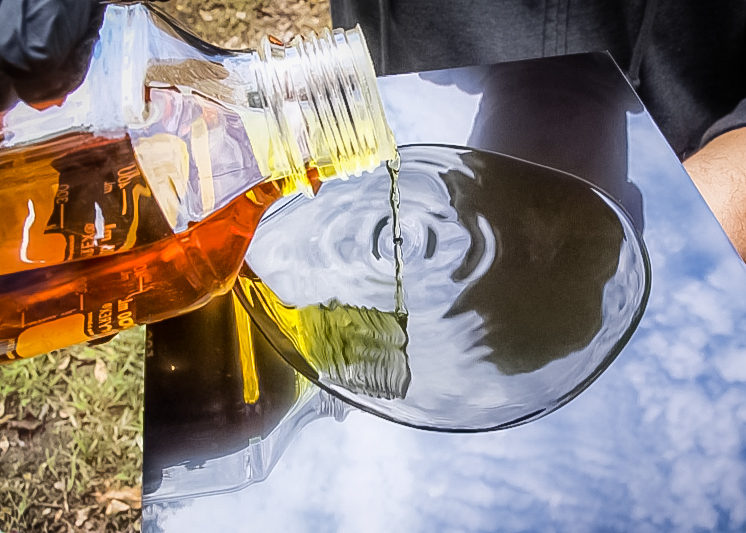
Are you curious to learn more about photographer Andrew Moxom or wet plate photography now that you’ve seen his segment on MNO? Read on for excerpts from his interview.
I’m a photographer that specializes primarily in film but in the last four years I’ve actually been doing wet plate collodion, which is my main interest lately.
I first came across people practicing wet plate collodion photography at a gathering, or an event, that’s hosted in northern MI every year now. A very good photographer friend of mine started this event called Photostock, I was instantly hooked on the tactile nature of the process and the almost instant result you get. It’s not digital instant, but I look at it as a 19th-century Polaroid photograph.
It’s called wet plate collodion because you have to have a darkroom with you, or a dark space to be able to process the plate. It all that has to happen within around a 10-minute timeframe and while the plate is still wet. So from the minute you pour that plate it’s starting to evaporate and dry out. // And that changes based on heat and humidity. So in the hotter places that you’re taking photos, that time is very critical and you have to adjust the process.
The standard fixer of the day was potassium cyanide. And there was a reason it was used // it clears the image – when I say “clears it,” it washes, it fixes the image onto the plate so that it’s archival. But it’s quick and you don’t need much water to rinse the plate off afterwards and make it archival. If you were to use your standard photographic fixer that’s available now, you have to wash the plates for 40 to 50 minutes afterwards. So, if you can imagine, you were an itinerant photographer traveling around many years ago, you would not have that much water available to you. You had to have the bare minimum. So cyanide was used.
If you think about film speed, the equivalent for a collodion would be probably about ISO 1, which is pretty slow. So that means you have to shoot with a fast lens, wide open, but it’s going to be a longer exposure typically.
Back in the day, head braces were used quite a bit. And that was just because, especially in portrait studios, // an exposure could be 5 or 6 seconds and having a head brace just gives you a little bit of a reference point. Just to stop people from swaying. But people move. Even with a head brace will move or their eyes will twitch from one way to the other. // And it could even be camera. The camera could move. Or, with the studio that we’re in right now, the floors will shake sometimes. So you just have to kind of wing it and go with it. // It’s just one of those things – it’s imperfect.
I primarily use two types of cameras for my collodion photography. When I’m on the road, I use a lighter, more easily portable 8-by-10 folding camera. It’s a modern-day camera that’s still made, actually. And then for the studio sittings, I use a very old centennial stand, which is a mahogany stand, and a cast iron base, and I have a big Deardorff commercial view camera on that.
In the future I plan to take the collodion process out on the road more with the mobile dark trailer that I put together. And I’m hoping to capture a bit more of the state // whether it’s portrait or landscape, which are modern, but with a 19th century view point using an old lens. I just like having that modern equivalent of something that may have been done a hundred old years ago.
I grew up in in England, and I’ve been over here approximately 20 years now. // I was used to the rolling landscapes of England, and was shocked by the sheer vastness of the Midwest: the massive open prairie, the massive sky that you have. And then seeing the Great Lakes for the first time, those were moments that kind of burned in my memory. I just never imagined it could be this way over here.
Read Next




